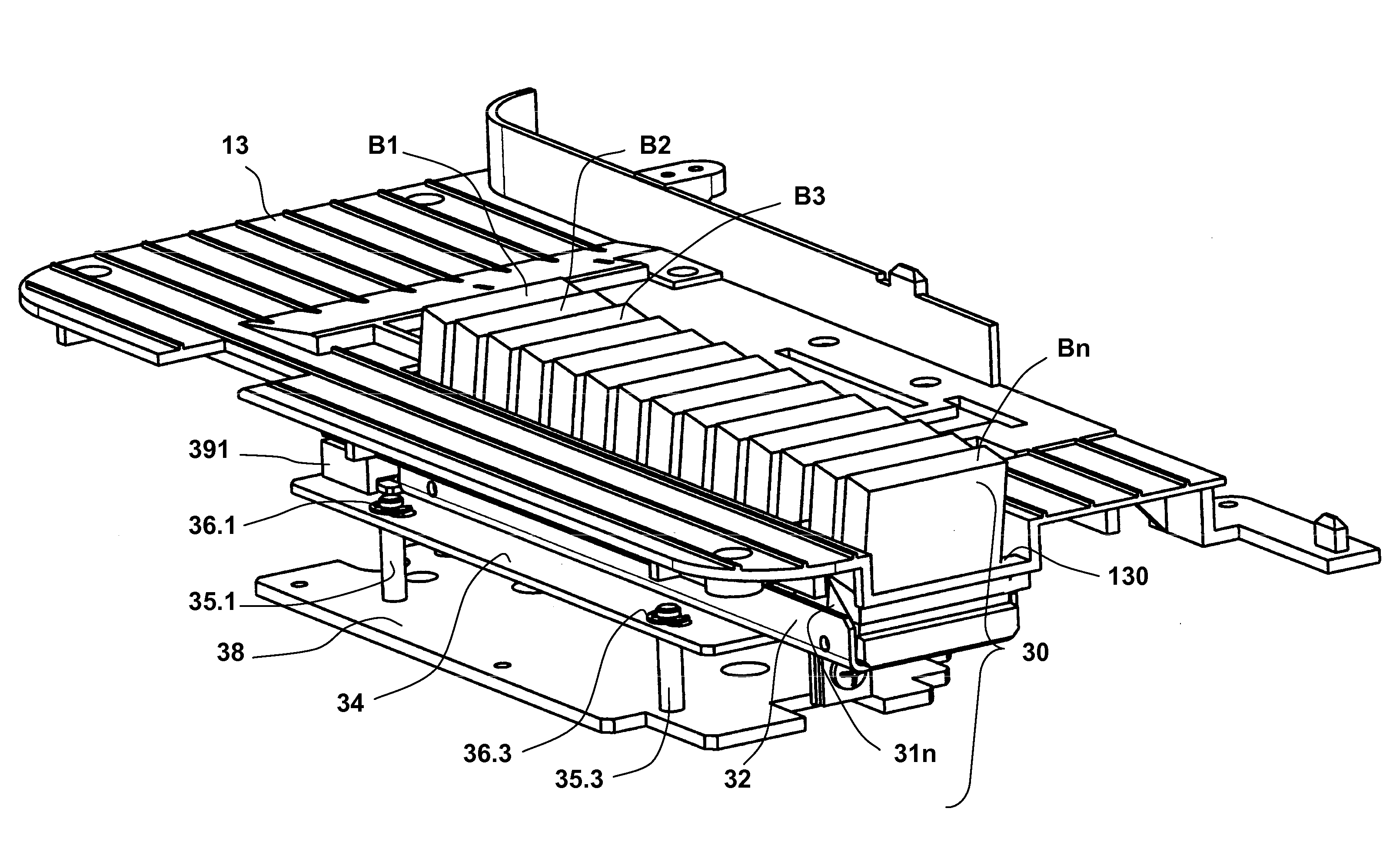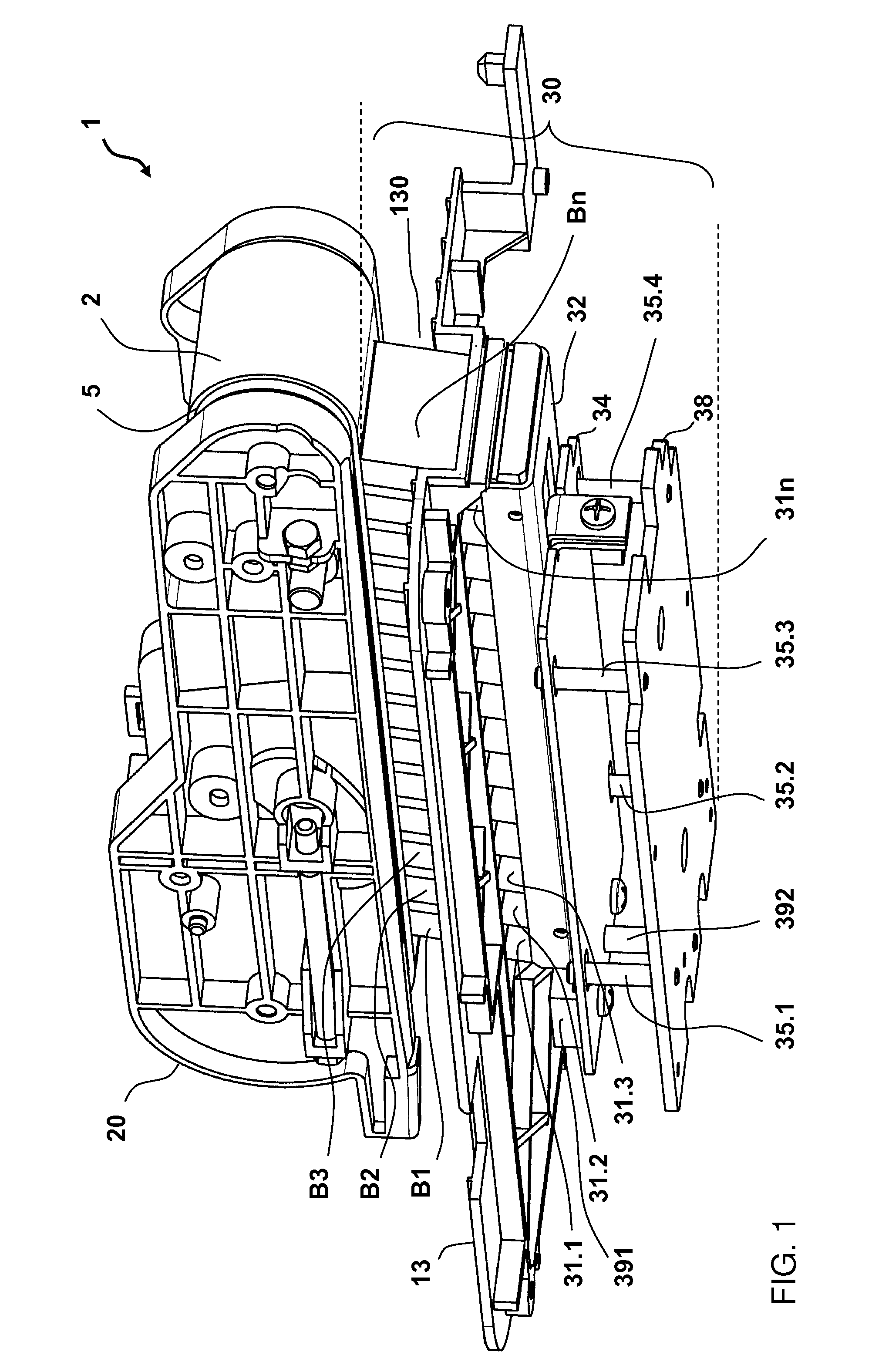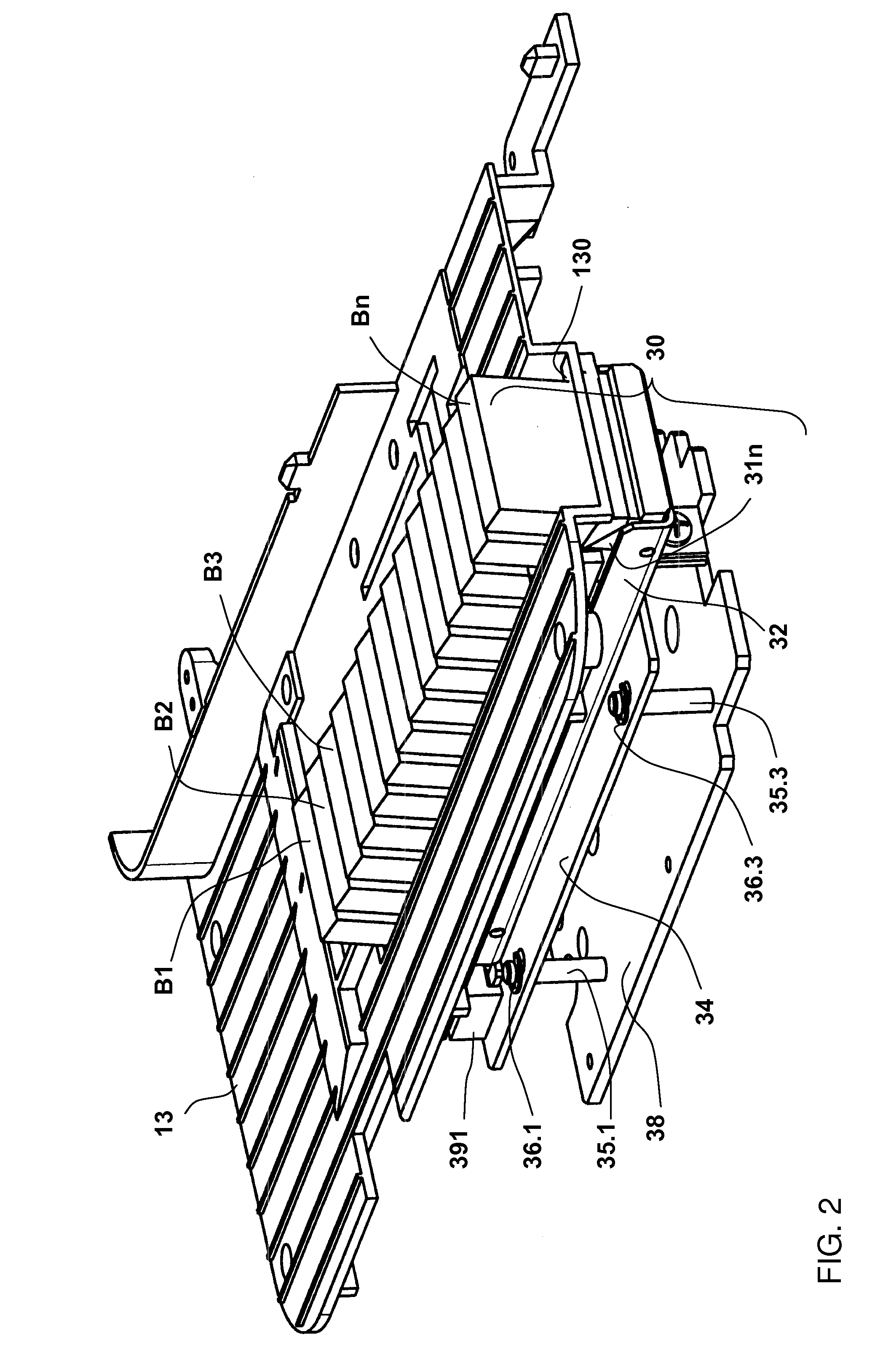Apparatus for pressing flat materials onto a transport module
a technology for transport modules and flat materials, applied in the direction of conveyer parts, other printing apparatus, printing, etc., can solve problems such as transport problems, achieve the effects of preventing the deformation of remaining or permanent brush elements, reducing the pressure force, and high printing quality
- Summary
- Abstract
- Description
- Claims
- Application Information
AI Technical Summary
Benefits of technology
Problems solved by technology
Method used
Image
Examples
first embodiment
[0043]FIG. 3 shows a front view of the pressing apparatus 30 with the holding carrier 32 having the multiplicity of brush elements B1, B2, B3, . . . , Bi, . . . , Bn and an unsprung slide-in unit 34 to 38. The holding carrier 32 has the multiplicity of brush elements B1, B2, B3, . . . , Bi, . . . , Bn and holders 31.1, 31.2, 31.3 . . . , 31i, . . . 31n for the brush elements. The holders are fastened in the holding carrier 32 which has a base plate 320, from which a first bracket 321 has been machined and is angled away at right angles. The latter and two horns on the mail flow inlet side of the base plate 320 (shown in dashed lines) serve to fasten the unsprung slide-in unit 34 to 38.
[0044]A second bracket 341, which is connected force-lockingly and form-lockingly to the first bracket 321 of the holding carrier 32, is bent away to the bottom from a base plate 34 of the unsprung slide-in unit 34 to 38. A screw connection is produced, for example, through the use of a metal screw 33 ...
second embodiment
[0046]FIG. 4 shows a front view of the pressing apparatus 30′ with a holding carrier 32′ having a multiplicity of brush elements and a sprung slide-in unit. The brush elements likewise are disposed in the form of a brush, as has already been explained by using FIG. 3. The construction of the slide-in unit is also comparable to the embodiment shown in FIG. 3, but with the addition of spiral springs 37.1′, 37.2′, 37.3′ and 37.4′ which are each plugged onto a respective one of bolts 35.1′, 35.2′, 35.3′ and 35.4′. A base plate 34′ in each case has one opening for one of the bolts 35.1′, 35.2′, 35.3′ and 35.4′, as a result of which the bolts can slide through at one end, with a force having to be applied counter to the spring action. The spacer bolts 35.1′, 35.2′, 35.3′ and 35.4′ are fastened at their other end on the floor plate 38′, for example likewise by screwing, riveting or spot welding. An adjusting bolt 392′ and an adjusting piece 391′ form an adjusting device 39′.
[0047]The adjus...
third embodiment
[0048]FIG. 5 shows a front-elevational view of a pressing apparatus 30* having a sprung slide-in unit 34* to 38*. The problem of preventing the permanent deformation of the brush elements while ensuring the secure transport of very thin mail items, in particular franking strips, over a long period of time is solved by providing a so-called dual spring system. The dual spring system on one hand provides the required pressure force, and, on the other hand, optimizes the pressure force such that a remaining deformation of the brush elements B1*, B2*, B3*, . . . , Bi*, . . . , Bn* is prevented.
[0049]The dual spring system consists of the already known spring elements 37* between the base plate 34* and the floor plate 38*, which hitherto served for pressing the holding carrier 32* onto the transport belt, as well as further spring elements 42*, which are arranged between the floor plate 38* and the chassis 42*. Preferably at least one additional spring element would be provided behind ea...
PUM
 Login to View More
Login to View More Abstract
Description
Claims
Application Information
 Login to View More
Login to View More - R&D
- Intellectual Property
- Life Sciences
- Materials
- Tech Scout
- Unparalleled Data Quality
- Higher Quality Content
- 60% Fewer Hallucinations
Browse by: Latest US Patents, China's latest patents, Technical Efficacy Thesaurus, Application Domain, Technology Topic, Popular Technical Reports.
© 2025 PatSnap. All rights reserved.Legal|Privacy policy|Modern Slavery Act Transparency Statement|Sitemap|About US| Contact US: help@patsnap.com



